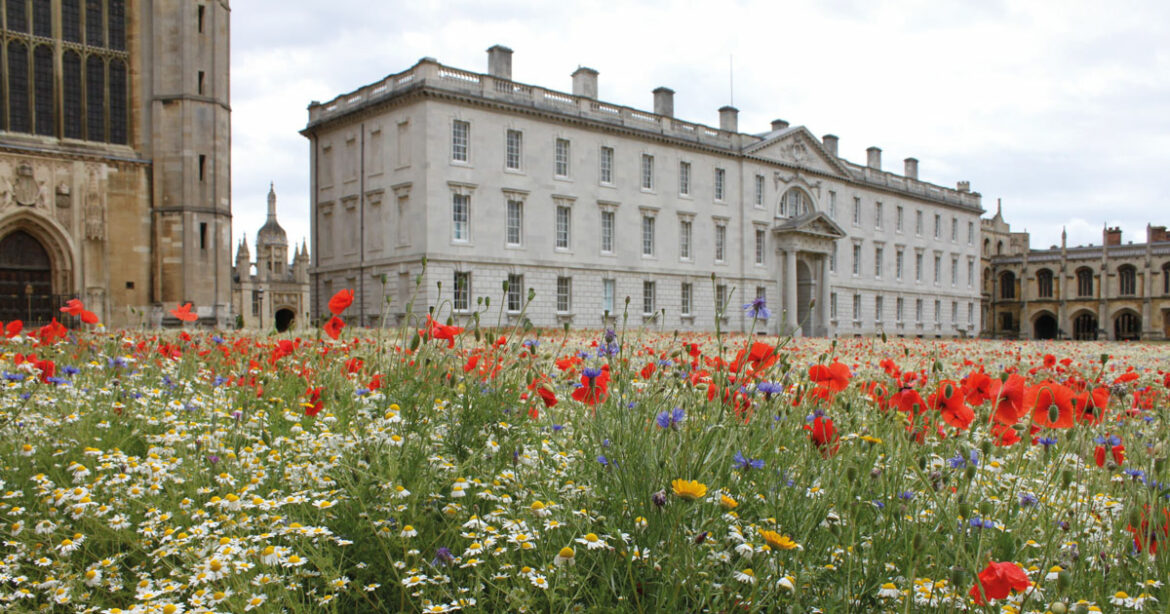Cambridgeshire is shooting ahead when it comes to reclaiming spaces for nature – Miriam Balanescu ventures into the overgrowth
Image: © Geoff Moggridge
Long before the term ‘rewilding’ was popularised – it first appeared in print in 1990 – ecologists in Cambridgeshire were letting nature run loose. An unused barley field north of Huntingdon was isolated on the whim of one such ecologist, Kenneth Mellanby, who closely monitored the experiment from 1961 until his death in 1993. Sixty years later, the former farmland has transformed into dense woodland (the ‘Monks Wood Wilderness’) and serves as an indication of how newer rewilding sites in the UK and Europe may evolve.
“There has been no management at all, such as planting or fencing, so it is the longest such experiment in Britain,” says Dr Richard Broughton, a lead researcher at long-term National Capability programme ASSIST. “Sites usually become abandoned by accident when nobody is looking, and so little is known about how they develop.”
Rewilding has special importance in Cambridgeshire, one of the least forested areas in Europe. “This is a county with valuable farmland and a growing population, so land is in demand,” Richard explains. And the county’s wilderness faces further threats: “Cambridgeshire’s native woodlands are under pressure from tree diseases, especially ash dieback. Climate change will also bring droughts, stressing the trees, while woodlands have been a victim of their own popularity during the pandemic. The increase in visitors can damage fragile vegetation through heavy footfall, and dogs off leads cause serious disturbance to wildlife.”
Seeing the effect of urban development first-hand (namely construction of the A14 near her home in Brampton), entrepreneur Vhari Russell founded Creating Nature’s Corridors, a charity planting 10,000 trees across the UK each year. “Rewilding is vital, not only due to climate change, but for the community we live in. During the pandemic, we all appreciated daily walks so much more – and nature is a huge part of that,” she says. Her charity works closely with farmers, landowners and councils to carefully plan tree planting, so it can help with other issues like flood prevention.
As national rewilding picked up pace, one of the UK’s most iconic landscapes was reclaimed by nature. Inspired by the work of ecologist Dr Terry Wells, King’s College head gardener Steve Coghill and fellow Geoff Moggridge dreamed up a way to improve the college grounds’ biodiversity – transforming its lawn, pristine since 1670, into a wildflower meadow. Unlike the Monks Wood Wilderness, the project required Steve’s extensive horticultural skills: “It’s not a case of just locking the space off and running away. You have to do it in a way that maintains the opportunity for that landscape to develop in biodiverse ways.”
Prior to planting, an ecologist was asked to assess what could grow on the lawn, while a practice laboratory analysed the nutrient status and soil texture. The wildflowers, sown in a tight-knit grass sward (a highly competitive environment), needed a hand. “We were putting on the rewilding accelerator: sowing a wide range of species and destroying the turfgrasses that were there before by scarifying, to get wildflowers going.” The site is now is up to four times more biodiverse; a surge in insects has tempted bats to hunt over the meadow.
Around the county, rewilding projects great and small are ongoing: the Great Fen is one of the largest-scale and longest-running examples of farmland turned untamed. Local councils are nurturing their own wilderness: Willingham Parish Council, for example, was granted £4,000 for biodiversity projects by Zero Carbon Communities. “Even a little bit is really good. A patchwork of urban gardens joins up to give wildlife corridors,” Steve urges. With initiatives only growing – Creating Nature’s Corridors plans to plant 1,200 trees across Cambridgeshire, and the university college gardeners have rewilded a community orchard – he adds: “You could say Cambridge is a bit of a hub.”

